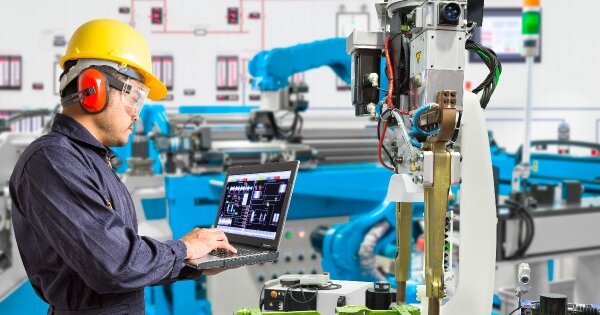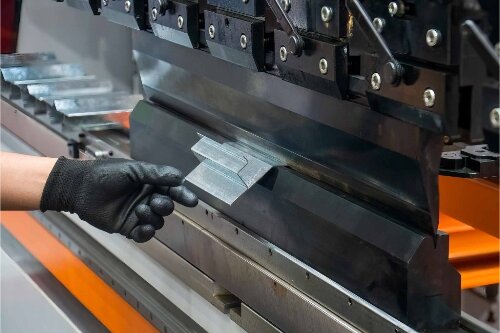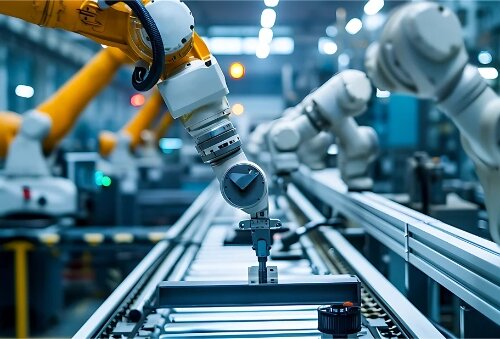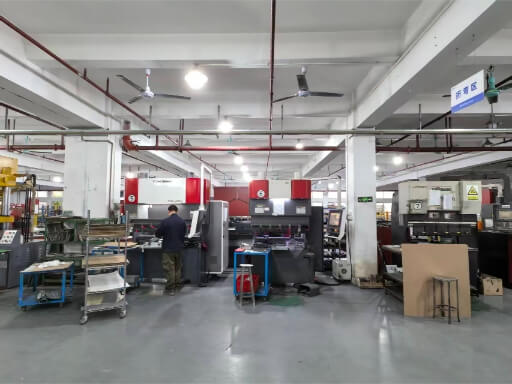Many sheet metal projects do not follow a straight path. Designs change. Markets shift. Customers also want early samples before tooling is ready. Many teams feel stuck between slow prototypes and expensive mass production.
Bridge production gives teams a middle option. It offers genuine parts, fast turnaround, and no upfront tooling costs. This guide explains what bridge production is and when it is most effective. It also demonstrates how to transition from bridge production to full production with reduced risks.

What Is Bridge Production?
브리지 생산은 프로토타입 제작과 대량 생산의 중간 단계에 해당하는 방식입니다. 이 공장에서는 레이저 절단, CNC 펀칭, 절곡, 용접 등 다양하고 유연한 도구를 사용합니다. 이 단계에서는 스탬핑 다이 또는 프로그레시브 다이를 사용하지 않습니다.
Bridge parts often match the real production materials and shapes. Engineers can test fit and strength early. Buyers can see the real costs and plan more effectively. Bridge production typically involves small or medium batches, ranging from a few dozen to a few thousand parts.
Bridge production works well for sheet metal because digital machines can update quickly. A change in a CAD file can move to the machines within minutes. This makes design changes easy and safe.
Why Sheet Metal Projects Often Need a Bridge Stage?
Many sheet metal parts need several rounds of updates. Engineers often discover issues only after they hold the first fundamental part. Some parts may not fit. Some bends may not form cleanly. Some holes may need minor changes.
Bridge production keeps the project moving while engineers work to resolve these issues.
Tooling Takes Too Long
Stamping dies often need 6–10 weeks or more. Many teams cannot wait that long. Bridge production enables the rapid production of parts without waiting for tooling.
Tooling Costs Are High When Designs Are Not Stable
Tooling can cost thousands of dollars. If the part changes later, the team must fix or rebuild the tooling. This adds to the cost and increases the delay. Bridge production avoids this early risk.
Demand Is Unclear in the First Months
New products often start slowly. A team may need 50 parts now and 300 parts next month. But no one knows if demand will reach 20,000 units per year. Bridge production covers this early uncertainty.
Supply Chains Can Change
Some companies switch suppliers or change locations. Some may face delays in shipping. Bridge production helps keep parts moving while long-term plans are being settled.

Key Benefits of Bridge Production
Bridge production offers faster timing, lower risk, and more control. The details below break these advantages into simple points.
Fast Delivery
Bridge production cuts parts quickly. Many shops can deliver the first batch in under one week. This speed enables engineering teams to test and move forward without delay.
Lower Early Risk
Bridge production eliminates tooling costs upfront. Teams can wait until they feel ready before paying for tooling. This lowers financial risk.
Easy Design Changes
Bridge production makes design updates simple. Engineers change the CAD file. The factory updates programs and continues production. No tooling change is needed.
Better Control During Early Builds
Bridge workflows remain steady even when quantities fluctuate. The factory can add units quickly or slow down if plans shift.
Good for Pilot Runs
Parts from bridge production are made from real materials. They work well for EVT, DVT, PVT, and early customer samples.
Limitations of Bridge Production
Bridge production has limits that matter for long-term plans. The notes below explain when the method may no longer fit.
Higher Cost Per Part
Laser cutting and 굽힘 cost more per part than stamping. When yearly need grows, tooling becomes cheaper.
A simple rule is:
- Under 2,000 pcs/year → bridge is good
- Over 8,000 pcs/year → tooling is better
Some Shapes Need Tooling
Deep-drawn parts, curved edges, and complex forms often require specialized tooling. Bridge production cannot always make these shapes at a low cost.
Different Looks or Tolerances
Bridge parts may have different bend radii or minor weld marks. Tooled parts may look smoother. Teams should check these differences early.
How to Decide If Bridge Production Fits Your Project?
Bridge production is a viable option, but it may not be suitable for every plan. The points below provide a simple way to determine if it meets your needs.
Check Your Timeline
Your timeline should guide your choice. If you cannot wait 6–10 weeks for tooling, bridge production gives you parts much faster.
Estimate Your First-Year Volume
Your expected volume often decides the best path. If you plan to build small or uncertain quantities, bridge production keeps your risk low.
Consider Your Design Stability
Your design should be stable before you invest in tooling. If changes may still happen, bridge production protects you from costly rework.
Compare Costs
Here is a simple example:
- Tooling cost: $12,000
- Bridge part: $18 per unit
- Tooled part: $4 per unit
Break-even is around 1,000–1,200 units. Under this number, bridge production is cheaper.
Think About Supply Chain Risk
If your supply chain is shifting or unstable, bridge production helps you avoid delays.
How Bridge Production Works in a Sheet Metal Factory?
Bridge production utilizes flexible tools and quick setups to manufacture genuine parts without requiring tooling. The steps below outline the process by which a factory manufactures these parts from start to finish.
Laser Cutting or CNC Punching
The factory starts by cutting flat patterns from sheet material. 레이저 절단 is well-suited for detailed shapes, while CNC 펀칭 is faster for creating repeated holes or simple forms.
벤딩
The team then forms the cut pieces on a press brake. The machines utilize simple programs, allowing engineers to update bend angles or flange sizes with minimal delay.
Welding and Assembly
Workers join parts with 용접, 리벳, 또는 hardware. These steps help confirm strength, fit, and 집회 before the design moves to tooling.
마무리 손질
The parts receive coating or surface treatment, such as powder coating, anodizing, or plating. This helps teams check final color, texture, and durability.

Cost Structure of Bridge Production
Bridge production follows a simple cost pattern based on time and labor. The breakdown below outlines the factors that drive the price and provides planning guidance.
Bridge production costs depend on:
- Machine time
- Labor time
- 하드웨어
- 마무리 손질
- 배치 크기
There is no tooling cost, so pricing is simple and based on processing time.
How to Move From Bridge Production to Full Production?
A smooth move from short-run builds to tooling needs clear steps. The points below help you lock the design, plan the tooling, and avoid delays in supply.
Step 1: Confirm the Design
You should use bridge parts to check fit, strength, heat, and assembly. A stable design reduces risk when you move to tooling.
Step 2: Identify Features That Need Tooling
You should look for shapes that cannot be made well with cutting and bending. These features often need real dies in the next stage.
Step 3: Start Tooling While Bridge Builds Continue
You should keep bridge production running while tooling is made. This overlap ensures that orders continue to move and prevents supply gaps.
Step 4: Inspect Tooling Samples
You should check the size, shape, and finish on the first tooled parts. Any fixes should be implemented before you start high-volume runs.
Step 5: Shift Production Slowly
You should move from bridge builds to tooling in small steps. This gives the team time to confirm quality and protect delivery.
결론
Bridge production gives teams speed, flexibility, and lower risk. It helps projects move forward even when designs are still changing. It also maintains steady delivery when tooling is not ready. Many teams use bridge production as the safest path from early builds to full production.
To determine if bridge production is suitable for your sheet metal part, you can share your drawings or STEP files for a quick review. A brief review can reveal your lead time, break-even point, and the optimal time to transition into tooling.
안녕하세요, 저는 케빈 리입니다

지난 10년 동안 저는 다양한 형태의 판금 제작에 몰두해 왔으며 다양한 워크숍에서 얻은 경험에서 얻은 멋진 통찰력을 이곳에서 공유했습니다.
연락하세요

케빈 리
저는 레이저 절단, 굽힘, 용접 및 표면 처리 기술을 전문으로 하는 판금 제조 분야에서 10년 이상의 전문 경험을 갖고 있습니다. Shengen의 기술 이사로서 저는 복잡한 제조 문제를 해결하고 각 프로젝트에서 혁신과 품질을 주도하는 데 최선을 다하고 있습니다.




